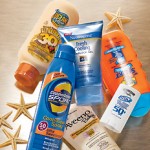 The Summer months for many individuals means spending lots of extra time outdoors. However, according to the Sun Safety Alliance, one American dies every hour from skin cancer. With more than one million cases diagnosed in the U.S. each year, skin cancer is more common than all other major types of cancer combined. Yet ironically it’s probably the most preventable type of cancer since the vast majority is simply due to overexposure to the sun. “Not only is it preventable, but skin cancer can also be detected early,” said Mordechai Tarlow, MD, a board-certified dermatologist on staff at Kimball Medical Center.
The Summer months for many individuals means spending lots of extra time outdoors. However, according to the Sun Safety Alliance, one American dies every hour from skin cancer. With more than one million cases diagnosed in the U.S. each year, skin cancer is more common than all other major types of cancer combined. Yet ironically it’s probably the most preventable type of cancer since the vast majority is simply due to overexposure to the sun. “Not only is it preventable, but skin cancer can also be detected early,” said Mordechai Tarlow, MD, a board-certified dermatologist on staff at Kimball Medical Center.
Look for any of the following and speak to your physician if any of these symptoms appear: changes on the skin, especially in the size or color of a mole or other darkly pigmented growth or spot, or a new growth; scaliness, oozing, bleeding, or change in the appearance of a bump or nodule; the spread of pigmentation beyond its border such as dark coloring that spreads past the edge of a mole or mark; or a change in sensation, itchiness, tenderness, or pain,” he explains.
Dr. Tarlow suggests following these simple guidelines to protect your skin from the strong rays of the summer sun:
Try to avoid the sun between 10 a.m. and 4 p.m. when the suns rays are at their strongest.
Stay in the shade, especially during the middle of the day .
Cover your body with protective clothing to guard as much skin as possible when you are out in the sun. Choose comfortable clothes made of tightly woven fabrics that you cannot see through when held up to a light.
Use sunscreen and lip balm with a sun protection factor (SPF) of 30 or higher. Apply a generous amount of sunscreen and be sure to reapply after swimming, toweling dry, or perspiring. Use sunscreen even on hazy or overcast days.
Cover your head with a wide-brimmed hat, shading your face, ears, and neck. If you choose a baseball cap, remember to protect your ears and neck with sunscreen.
Wear sunglasses with 99% to 100% UV absorption to provide optimal protection for the eyes and the surrounding skin.
“Be sure to schedule a clinical exam or skin screening at least once a year,” says Dr. Tarlow. “You can take steps to prevent skin cancer, but you need to be mindful of the changes happening to your skin and talk to your doctor about them.”
To schedule an appointment with Dr. Tarlow, please call the Saint Barnabas Health Care Link at 1-888-SBHS-123 (1-888-724-7123).


Please be aware that sunscreen use is a controversial topic.
See here: http://en.wikipedia.org/wiki/Sunscreen_controversy
Just for your info you can write whatever you please on wikipedia – keep that in mind when you are trying to get your info from there – ask your Dr. about medical concerns to be safe.
Thank you TLS for posting this article.
The US is about 20yrs behind in skin care awareness .
I still don’t understand how Lakewood schools don’t have a sun
Cap for kids to wear while playing outside.
In Australia there has been strong campaigns for over 20 years with a whole generation been brought up with knowledge of the dangers of skin exposure.